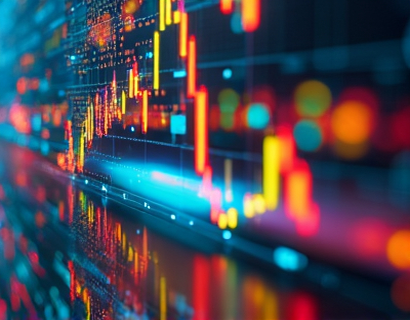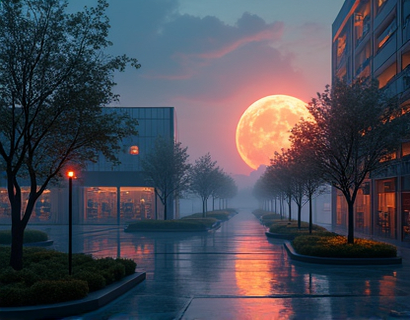Unlocking Artistic Opportunities: A Comprehensive Guide to Discovering and Selling Unique Artworks Online
The digital age has transformed the way artists and art enthusiasts interact, creating unprecedented opportunities for creatives to showcase and sell their work. In this comprehensive guide, we delve into the world of online platforms designed specifically for artists and collectors, focusing on how these spaces are revolutionizing the art market. We will explore the benefits of using such platforms, the types of artworks available, and the steps involved in buying and selling unique pieces. This article aims to provide a thorough understanding of the current landscape, empowering both artists and art lovers to navigate and thrive in this vibrant digital ecosystem.
The Rise of Online Art Marketplaces
The traditional art market has been evolving rapidly with the advent of technology. Online art marketplaces have emerged as a pivotal force, bridging the gap between artists and collectors from around the globe. These platforms offer a dynamic environment where artists can exhibit their work and reach a broader audience, while collectors can discover and purchase unique pieces with ease. The convenience, accessibility, and diversity of online marketplaces have made them an indispensable tool for the modern art community.
Benefits for Artists
For artists, online platforms provide a direct line to potential buyers, eliminating the need for intermediaries such as galleries. This direct connection allows artists to retain a larger portion of the sales revenue, which is a significant advantage. Additionally, these platforms offer tools for artists to build and maintain their personal brand, including portfolios, artist statements, and social media integration. This visibility is crucial for emerging artists looking to establish themselves in a competitive field.
Online marketplaces also facilitate the sale of both physical and digital artworks, catering to a wide range of artistic mediums. Digital art, in particular, has gained immense popularity, with platforms supporting various formats such as NFTs (Non-Fungible Tokens), digital paintings, and interactive art. This inclusivity ensures that artists working in diverse mediums have a platform to showcase their unique creations.
Benefits for Collectors
Collectors benefit greatly from these online platforms as well. The ability to browse a vast collection of artworks from the comfort of their homes saves time and effort. Detailed descriptions, high-quality images, and artist profiles provide valuable insights, helping collectors make informed decisions. Moreover, the authenticity and provenance of artworks are often verified through the platform, adding a layer of trust and security to the buying process.
Another significant advantage is the global reach. Collectors can discover and purchase artworks from artists across the world, expanding their horizons and supporting a diverse range of creative talents. This global exposure not only enriches personal collections but also contributes to the cultural exchange and appreciation of different artistic styles and traditions.
Types of Artworks Available
The variety of artworks available on these platforms is staggering. Physical artworks include paintings, sculptures, prints, and mixed media pieces, each with its unique characteristics and value. These traditional forms of art continue to captivate collectors and enthusiasts who appreciate the tactile and visual qualities of physical pieces.
Digital artworks, on the other hand, have opened new frontiers in the art world. This includes digital paintings, illustrations, 3D models, and interactive art experiences. The rise of blockchain technology and NFTs has further legitimized digital art, providing artists with new ways to monetize their creations and collectors with unique investment opportunities. The versatility and innovation of digital art make it an exciting area to watch in the art market.
How to Get Started
For artists looking to showcase their work, the first step is to choose a reputable online platform. Research is key, as different platforms may have varying fees, features, and target audiences. Consider factors such as the type of art you create, the level of control you want over your work, and the platform's reputation in the art community. Once you select a platform, create a compelling artist profile, including a bio, high-quality images of your work, and a detailed artist statement.
Uploading your artworks is the next step. Ensure that the images are high-resolution and well-lit, showcasing the artwork's details and textures. Provide accurate titles, descriptions, and pricing information. For digital artworks, include details about the file format and any specific viewing requirements. Engaging with the platform's community features, such as forums and social media integrations, can also help increase visibility and attract potential buyers.
For collectors, the process is equally straightforward. Browse the platform's extensive collection, using filters and search options to find artworks that align with your interests and budget. Read the descriptions carefully, and if possible, reach out to the artist for more information. Once you find a piece you love, follow the platform's purchasing guidelines, which typically involve a secure payment process and verification of the transaction.
Building a Community
One of the most valuable aspects of these online platforms is the community they foster. Artists and collectors can connect, share ideas, and provide feedback, creating a supportive and dynamic environment. Many platforms host virtual events, such as artist talks, workshops, and exhibitions, which further enhance the community experience. These interactions not only help build relationships but also drive interest and sales.
Engagement is key. Artists should actively participate in discussions, share their creative processes, and respond to comments and messages. Collectors can show support by liking, commenting, and sharing artworks they admire. This mutual engagement helps build a loyal and engaged community, which is essential for the long-term success of both artists and collectors on the platform.
Challenges and Considerations
While online art marketplaces offer numerous benefits, there are also challenges and considerations to keep in mind. For artists, maintaining a consistent and high-quality output is crucial to keep the audience engaged. Managing the technical aspects of the platform, such as uploading images and updating profiles, can also be time-consuming. However, many platforms offer customer support and user-friendly interfaces to mitigate these issues.
For collectors, the primary challenge is ensuring the authenticity and value of the artworks. Reputable platforms address this by verifying artist credentials and providing transaction guarantees. It's also important to understand the market value of the artworks and set a budget accordingly. Emotional connection and personal taste play a significant role in the buying decision, so it's essential to follow your instincts while doing thorough research.
Future Trends in Online Art Marketplaces
The future of online art marketplaces looks promising, with several trends shaping the industry. The integration of virtual and augmented reality technologies is creating immersive viewing experiences, allowing collectors to explore artworks in 3D environments. This technology not only enhances the viewing experience but also provides artists with new ways to present their work.
Another trend is the increasing acceptance and legal recognition of NFTs and other digital assets. As blockchain technology matures, more artists and collectors are embracing these innovative forms of art, opening up new avenues for creativity and investment. The sustainability of digital art, including environmental considerations, is also becoming a focal point, with platforms exploring eco-friendly practices.
Furthermore, the globalization of the art market is continuing to grow, with platforms connecting artists and collectors from diverse cultural backgrounds. This cultural exchange enriches the art world, fostering innovation and appreciation for different artistic traditions. As the world becomes more interconnected, the demand for inclusive and diverse art platforms will only increase.
Conclusion
Online art marketplaces have transformed the way artists and collectors interact, offering a wealth of opportunities for both parties. By providing a platform for discovery, sale, and community building, these spaces are revolutionizing the art market. Whether you are an artist looking to share your work with the world or a collector seeking unique pieces to add to your collection, these platforms offer a valuable and engaging experience. Embracing the digital age of art not only supports creative talents but also enriches the cultural landscape for everyone involved.











































